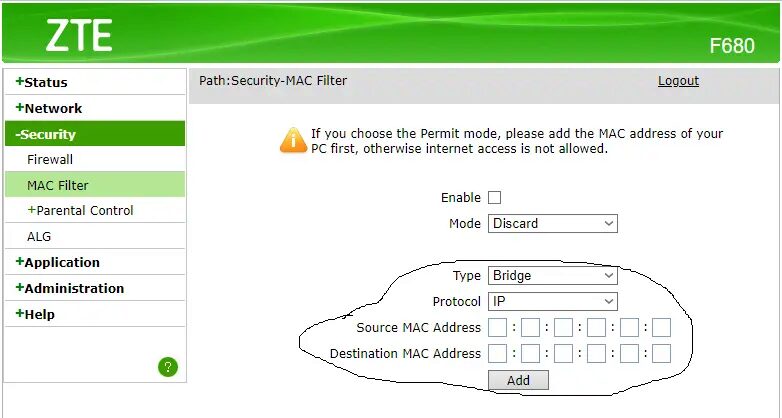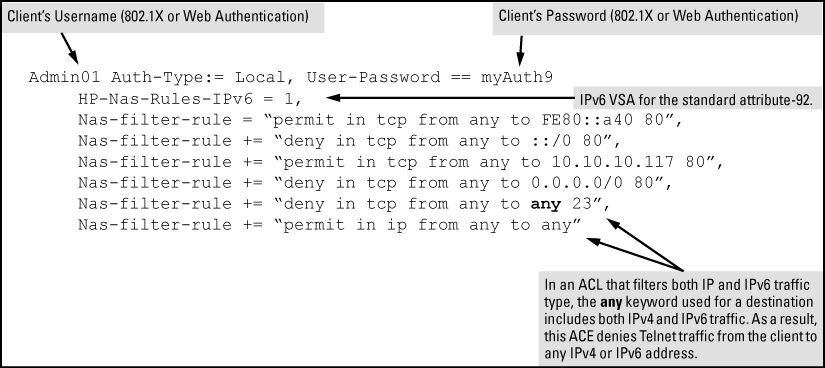
Cisco mac address access list mac#
Notice that actual MAC Addresses returned look like some garbage characters but those are actually MAC address in ASCII format that needs to be converted to HEX to get a conventional xx:xx:xx:xx:xx:xx style. Here is the Example of output from our LAB Switch: To get list of MAC address perform SNMP Get-Bulk request for “.1.3.6.1.2.1.17.4.3.1.1”
Cisco mac address access list code#
One of the ways to get list of MAC addresses from the forwarding table of Cisco switch is via SNMP MIB: dot1dTpFdbEntryġ.3.6.1.2.1.17.4.3.1.1 ( dot1dTpFdbAddress)ġ.3.6.1.2.1.17.4.3.1.3 ( dot1dTpFdbStatus)ġ.3.6.1.2.1.17.4.3.1.1 ( dot1dTpFdbAddress) contain list of MAC addresses in Binary formatġ.3.6.1.2.1.17.4.3.1.2 ( dot1dTpFdbPort) contain IfIndex value of the interface associated with each MAC Addressġ.3.6.1.2.1.17.4.3.1.3 ( dot1dTpFdbStatus) contain Status code which gives information how each MAC was learned by the switch. This brings us to the end of this lesson in which we covered Named ACLs, it is very important that we both have the theoretical and practical knowledge of ACLs to master the topic.How to collect list of MAC addresses from Cisco Switch via SNMP (dot1dTpFdbEntry) R1(config)# access-group DENY_HOST_FTP in R1(config)# ip access-list extended DENY_HOST_FTP Similarly we can use an Extended Named ACL to deny traffic from a particular host accessing a particular host using a specific protocol. R1(config)# ip access-list standard TELNET We will use Named ACLs for the configuration examples we covered in our previous articles on Standard and Extended ACLs to demonstrate the fact that Named ACLs are only configuration enhancement and the actual ACL operation remains the same.įor example when we need to block an incoming telnet session from a host we can create a standard Named ACL and apply it to the vty lines as shown below Named ACLs can either standard or extended and the functionality remains the same.

The optional sequence-number keyword lets us add, delete or resequence specific entries in the ACL.Īs mentioned previously Named ACLs were introduced in Cisco IOS to add flexibility and easier management of ACLs. When we create a Named ACL using the ip access-list command the Cisco IOS will place the the CLI in access-list configuration mode, where we can define the denied or permitted access conditions with the deny and permit commands. (Optional) Includes the input interface and source MAC address or VC in the logging output. (Optional) Wildcard bits to be applied to the destinationĬauses an informational logging message about the packet that matches the entry to be sent to the console. Use the any keyword as an abbreviation for a destination and destination-wildcard of 0.0.0.0 255.255.255.255. Specifies the IP address/network to match on the destination IP address of the Packet. (Optional) Wildcard bits to be applied to the source Use the any keyword as an abbreviation for a source and source-wildcard of 0.0.0.0 255.255.255.255. Specifies the IP address/network to match on the source IP address of the Packet. Name or Number of an Internet Protocol such IP, TCP, UDP, EIGRP, OSPF etc Permits access if the conditions are matched.

Also allows the creation and separation of multiple access lists.Īllows addition, removal and resequencing of individual access-control entries within the ACL.ĭenies access if the conditions are matched. Protocol source source-wildcard destination


 0 kommentar(er)
0 kommentar(er)
